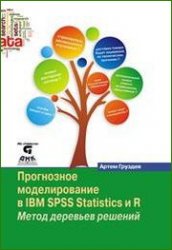- Добавил: literator
- Дата: 15-04-2025, 20:01
- Комментариев: 0
 Название: Introduction to Statistical Computing and Visualization Using R
Название: Introduction to Statistical Computing and Visualization Using RАвтор: Megha Rathi
Издательство: CRC Press
Год: 2025
Страниц: 420
Язык: английский
Формат: epub (true)
Размер: 10.1 MB
The book provides a foundational guide to statistical computing and visualisation Using R programming with an emphasis on practical data analysis skills that are directly applicable to diverse fields like finance, defence, health, and education. It uniquely combines a thorough explanation of basic constructs with advanced topics such as data visualisation, statistical modeling, and probability, making it accessible yet comprehensive for learners across disciplines. This approach allows readers not only to build essential R skills but also to apply them to real-world scenarios, equipping students and professionals from various disciplines with versatile analytical tools. It offers a comprehensive yet approachable introduction for students and scholars from various disciplines using R.









